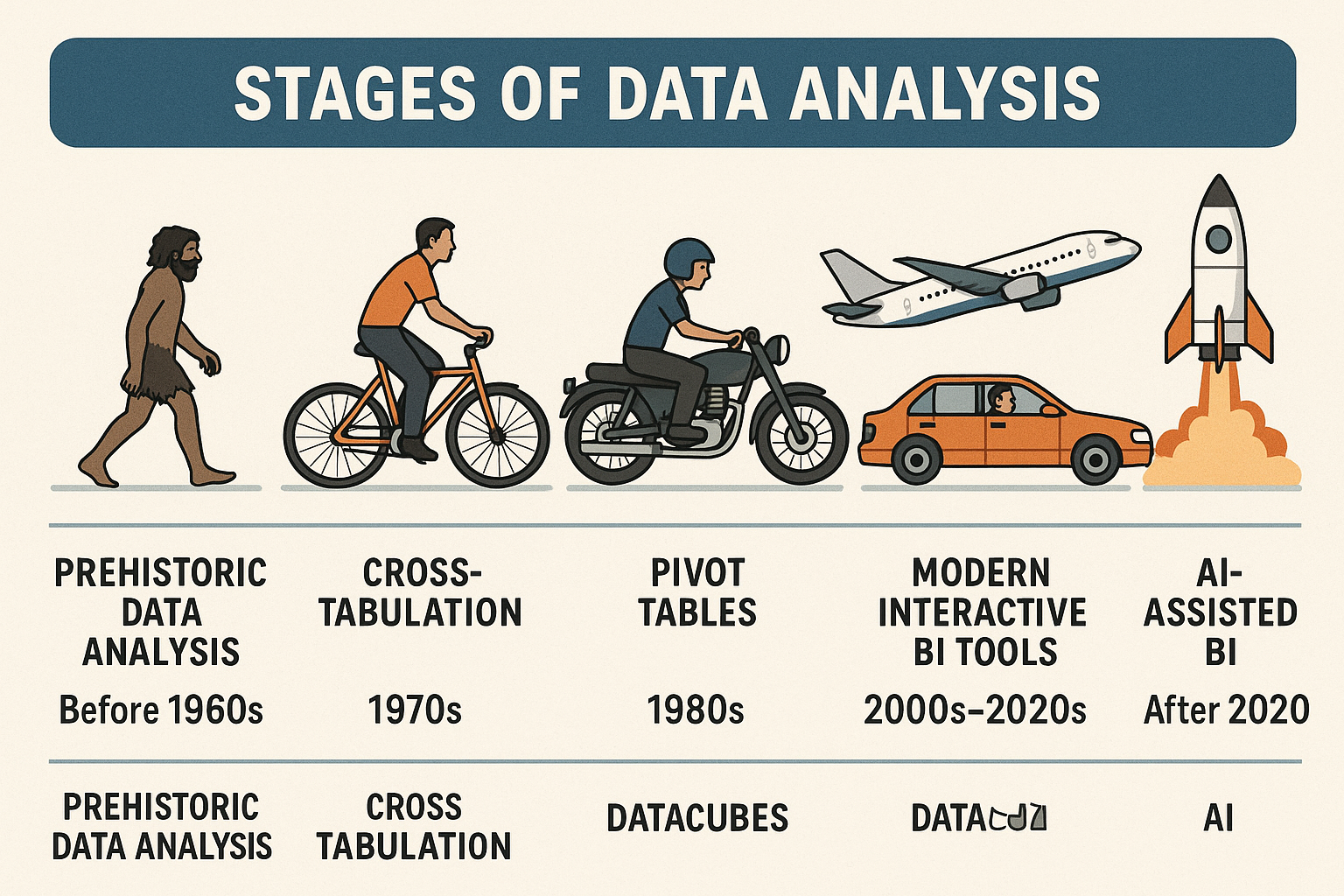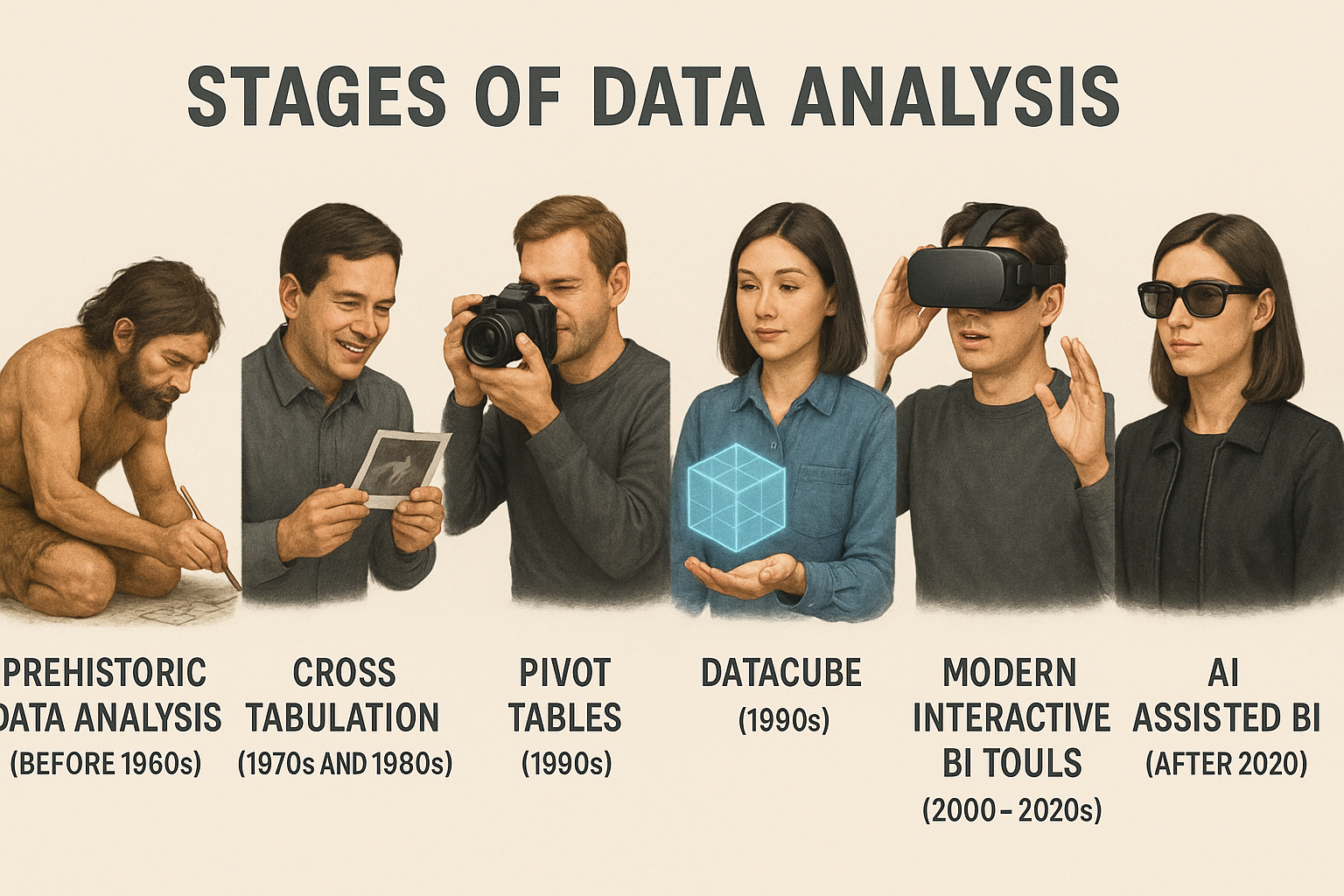Stages of Data Analysis
The evolution of analytics tooling shows how teams moved from manual summaries to intelligent, automated insights. Each milestone below marks a leap that brought richer context, faster exploration, and smarter decisions to business intelligence.
1. Cross Tabs to Pivot Tables
Early analysis lived in static cross tabulations that compared two dimensions at a time. They established the foundation for structured thinking about measures versus categories, even if every new question meant rebuilding the summary by hand.
- Cross Tabulation: Manual row-and-column layouts highlighted intersections like product by region, but flexibility was limited.
- Pivot Table Revolution: Spreadsheet tools automated the reshaping, letting analysts drag fields, aggregate on the fly, and explore scenarios without rewriting queries.
- Data Cubes: OLAP engines pre-calculated multi-dimensional aggregations so that thousands of pivot-table style combinations could be answered instantly.

2. Interactive BI to AI-Enabled Insights
As business questions grew broader, platforms layered richer interfaces and intelligence on top of cube technology. Modern BI removes the latency between curiosity and action by blending guided visuals with machine learning assistance.
- BI Interactive Visualization: Dashboards and storytelling visuals invite stakeholders to slice, filter, and drill without waiting on IT.
- AI-Enabled BI: Natural language queries, anomaly detection, and predictive insights surface patterns proactively so teams act before trends fade.
